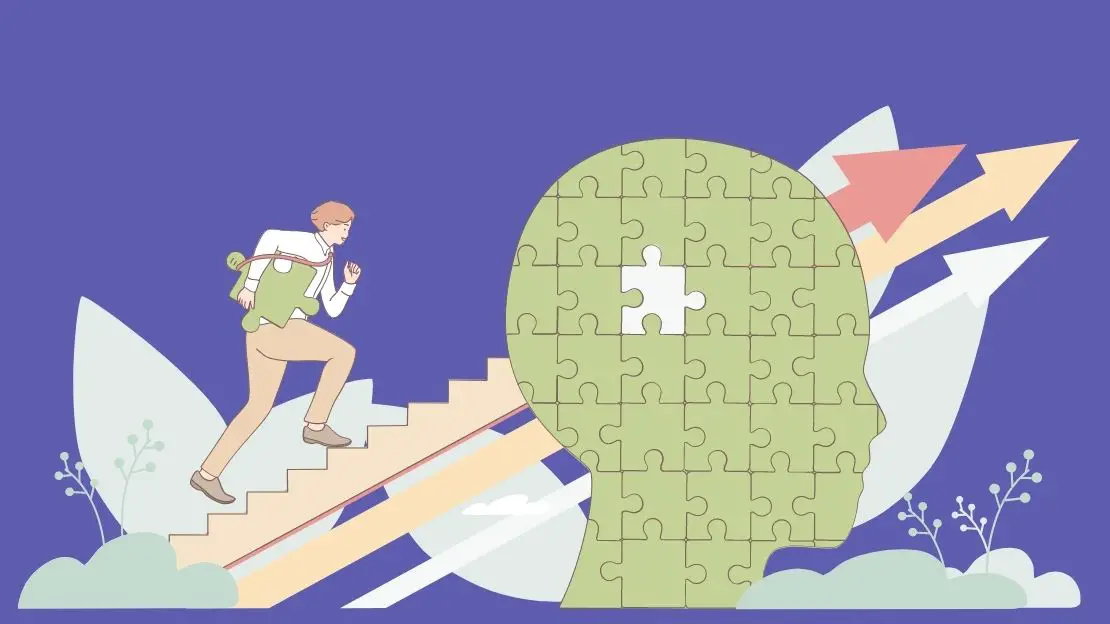Resilience – It is The Life Skill That Allows You to Bounce Back No Matter What Life Throws At You.
The U.S. Department of Health and Human Services (2018) defines resilience as ‘the ability to withstand, adapt to, and recover from adversity and stress‘, something which is of great importance in the times like this.
When you possess resilience, you are able to get up, dust yourself off, and keep going.
Resilient people bend, they do not break.
Many of the challenges that we face in our life feel as though they’re the end of everything, we can get caught up believing we’ll never get over that breakup, that we can never earn back our reputation after a bad performance at work, it feels as though this misery is a permanent state.
IT’S NOT.
Stress, anguish, trauma and most of life’s problem and struggles are gifts that when seen as such can lead to tremendous personal growth.
While it may not feel like it in the moment, the struggles that we face can make us stronger. If you don’t consider yourself a resilient person, how can you become one?
Persistence and resilience only come form having been given the chance to work through difficult problems.
~ Gever Tulley
How To Develop Resilience?
Certain skills are malleable, and you can practice them in preparation, like self-compassion is a learned habit that you can improve on, gratitude is something you make the choice to practice daily, positive thinking is another choice you make, and these are all things that you can improve on each day. Resilience is a skill that can be improved, but to develop it you first need to face a challenge.
It is in the face of that challenge that you have the opportunity to show your resilience. Life constantly knocks us down, but how quickly do you get back up? The quicker you get back up and go harder is a sign of how strong your resilience is.
Eventually, you come to a point where you realize that when life does knock you down you just get back up and become a stronger person because of it.
You’re also less likely to worry about the inevitable knockdown that life will bring – because you know you’ll just bounce back like you always do.
19 Key Components of Resilience
Are You Resilient?
Consider the following in understanding how resilient you are and where you can improve…
1. Self-Awareness
Resilient people have self-awareness and self-understanding. They know themselves, and what they are capable of, and can look within to ask themselves difficult questions.
2. Acceptance
Those things we do not accept, we will instinctively fight. Acceptance not only facilitates adapting to any given adverse situation, through adaptation we gain the opportunity to face it, and deal with it in positive ways.
3. Accept Personal Responsibility
Resilient people do not have a victim mentality or blame life, others or anything for their problems. They own their life and take 100% responsibility for it, their reactions and their responses to any situations.
4. Embrace Change
Change is the only constant in life, embracing and accepting this fact builds resilience.
5. Embracing Life Lessons
The resilient know that challenges and adversity are key opportunities to grow, and these life lessons serve as pivotal times of personal growth.
6. Optimism
Resilience requires optimism because that is the attitude needed to face any type of adversity. Seeing the silver lining, the bright side and looking at bad situations with a positive attitude frees us to accept, deal with and process problems and adversity in a proactive manner.
7. Strong Problem-Solving Skills
To be resilient requires strong problem-solving skills, this is especially important when dealing with a crisis, where these skills can keep you calm and focused on a successful solution.
8. Gratitude
Gratitude for all that you have helps keep you focused and grounded when life throws its curveballs. Being grateful makes you mentally strong, and therefore more capable in dealing with life’s challenges.
9. View Adversity As An Opportunity
Resilient people see adversity as an opportunity for personal growth. We grow as people when we overcome challenges, trials and tribulations.
10. Courage and Fearlessness
Acting without fear is a key component in dealing with adversity. Fear often holds us back from acting, and since resilience requires one to act in the face of adversity, a fearless attitude is key.
11. Calm and Focus
Catastrophic thinking and panic are roadblocks to dealing with adverse situations. Staying calm, centered and focused does the opposite, allowing you to think, plan and act with intention. Resilient people don’t panic, they accept, plan and act.
12. Confidence
Resilient people are confident in their ability to deal with crisis, adversity and problems that life throws their way. They believe in themselves. This confidence grows from practice in dealing with life’s ups and downs in positive ways and with resilience.
Supreme Self-Confidence: Learn how to open the door to unstoppable confidence and higher self esteem. Read more…
13. Excellent Self-Care Habits
Self-care is center to resilience because during tough times we must be able to have a list of got to activities that recharge us and refill our cups.
14. Ask For Help
Resilient people know when it’s time to ask for help and they are able to do so without hesitation.
15. Life On Life’s Terms Mindset
Resilient people accept responsibility for the things they can control and let go of those beyond their control. For example, a terminal illness diagnosis can send the resilient person to spend his final time on Earth doing positive things, while the non-resilient will waste that precious time fighting reality.
16. Broad Thinking and Flexibility
Resilience means thinking of all possible options to deal with adversity. Thinking outside the box, looking at the situation from all possible angles, questioning our own interpretation of it and keeping the mind open to new and unexplored possibilities are all ways to remain resilient in any adverse situation.
17. Persistence
Never give up, fight, deal, find a way and make it happen are all attitudes of resilient people when faced with situations within their control.
18. Knowing This Too Shall Pass
Resilient people can see the big picture of life and all the possibilities that are out there, they know that the current crisis, problem or adverse situation will pass, and that vision keeps them grounded in the moment to deal with it.
19. Productivity
Resilient people have a productive mindset. Instead of wallowing, they act, in whatever way they need to resolve the problem.
11 Different Ways To Build Resilience
There is no one way to tackle resilience building, there are a wide variety of ways you can work to build your resilience levels and you may find that some of these suggestions work for you better than others.
We’re all different and react to learning techniques and tips in different ways. So, don’t be afraid to pick and choose what you believe will work for you and mix it up if you aren’t seeing improvements. This will be a continual process.
1. Stop the Cycle
How do you respond when a negative event occurs? You probably think of all the other negatives that might come from it, and you get caught up worrying about what you should have done instead of what you did. We get caught up on the event itself believing that if you analyze it often enough, long enough, and hard enough that somehow you will magically go back in time to fix it.
You’re in the negative thought cycle and you need to stop it in its tracks. It’s not helping you, it’s preventing you from taking action. It’s okay to understand where you went wrong in a situation so that you can ensure you don’t repeat it, but it’s imperative that you don’t allow it to take over your thoughts completely and prevent you from moving on.
How?
You must break the habit and interrupt those thoughts when they crop up. For example, you can’t stop thinking about a particular situation you faced, and it constantly replays in your mind. It keeps you up at night, it haunts your quiet time, and you can’t seem to shake it.
When you realize that you’re dwelling on this negative event you have to think your way out of it. Your blood pressure may be up, you might feel your stress levels creeping, but you have to break the cycle.
If you can get up and go for a walk/run to force those thoughts out of our mind, great – if exercise isn’t possibility at that moment, try deep breathing. You need to do something that requires your brain and your body to break the thought cycle.
You need to have plan in place for when you’re faced with the problem, though, so if you’re at work or in bed it should be deep breathing or if it’s an appropriate time to exercise, do that, listen to loud music, know what you will do in each situation. You’re essentially short-circuiting those negative thought cycles.
2. Question Everything
Especially catastrophes. You know, those moments where you conjure up the absolute worst case scenario and find yourself caught up, convinced that you’re going to crash and burn? A good example would be a job loss (or missing out on a long due promotion) and convincing yourself that you will never work again or have any joy or success.
Sure, this is an extreme reaction, but it’s one that many people go through – it’s common for us to fall into the trap of convincing ourselves that the worst case scenario will happen.
How can you beat that? Plan ahead (it’s the answer to pretty much everything in life). It’s always important to have a good idea of potential negative outcomes may come in any given situation, but you’re causing yourself unnecessary stress by assuming the worst case scenario is likely – it’s affecting your resilience.
You can use the tips above to try to break this habit, the best way to deal with negative thoughts is to get control over them. They’re not as scary once you’re in control of the situation. You start to realize that they will come and go, and you’ve built a toolbox full of the skills necessary to break them. This is developing resilience.
3. Overcome Fear
Sadly, many of us go to extreme lengths to avoid failure – because we’re utterly terrified of failing. There may be a dozen reasons why you’re afraid of failing, but many of those reasons revolve around worrying about what others will think of our failures.
We feel ashamed, we feel guilty that we may have let people down, we’re afraid people will judge us.
If we view failure as a contagious illness, then we rob ourselves of the ability to overcome and develop resilience.
You’re also robbing yourself of the opportunity to succeed – why live in the comfort zone when it could be holding you back.
While some people may be content in that comfort zone, a lot of us are languishing there, wishing we had the guts to strike out. Well, strike out! You can’t shake that fear or develop your resilience if you don’t start putting yourself out there.
Instead of viewing failure as a threat or preparing for failure start viewing everything as a challenge to overcome. Who doesn’t enjoy a challenge?
When you push yourself out of your comfort zone you start to see what you’re truly capable of and you’re more likely to push yourself out there even further.
To change your mindset, you’ll need to take a look back at some of the biggest challenges you’ve faced. For example, you have a major interview coming up and you’re feeling worried and nervous about it.
Just look at what you have achieved in your current role and remind yourself how successful you’ve been, even if it’s the small things.
Sometimes we need a reminder about how successful we’ve been to push ourselves forward.
Take it a step further by visualizing your success. Find somewhere quiet, imagine yourself arriving at the interview and completing it and walk through some of your answers and achievements you plan to speak about. That can take the sting out of the nervousness and increase your performance on the day. This is something athletes often do ahead of a big race or game.
4. Look For The Benefits
Do you know why we call challenges a challenge?
Um, because they’re challenging… They’re not easy to tackle, they’re not simple to do, they often require a measure of blood, sweat, and tears and we tend to get caught up in the negatives rather than focusing on the positives.
Have you ever faced a challenge and found yourself obsessed with failure rather than focusing on succeeding? Yes, we all have.
While it’s important to take note of your failures and learn from them, it can be difficult to overcome the negative emotions that surround it and may be clouding your thought process.
It’s difficult to see the positives in failure when you’re too busy being upset about failing. If this is you then try to go back to a past failure, one that you’ve moved on from a bit and look at the learning experiences you walked away with.
This is a practice you should run through after every failure and not only will it help you build resilience, but you’ll start to see that you move on quicker. So, start by making a list of the lessons you’ve learned from past failures.
Did you miss a deadline and realize you need to learn how to prioritize and plan more efficiently? Or, do you struggle with delegating? Worse still, do you get caught up in your perfectionism and slow the process down?
Here are a few questions to help you tease out those lessons:
- what lesson did you learn?
- how will you grow?
- how will you develop?
- what were the positive outcomes?
- do you feel gratitude for anything related to the situation?
5. Distance Your Emotions
Have you ever noticed that you give amazing advice to your friends? You seem to be able to analyze their situation clearly and dispense such incredible advice that it saves their situation, but you can’t do it for yourself.
There’s a reason for this – you’re viewing their situation as a fly on the wall, you don’t have an emotional attachment to what’s going on, so you are able to think it through logically and view it through a different lens.
When the challenge or situation is your own it’s more difficult to separate yourself from the emotion.
You have to do it, though.
You have to practice being a fly on the wall in your own situation it’s the only way you can remove the sting and see things more clearly.
Think about a conflict you’ve recently been faced with, one where there was another person involved and be specific about what happened.
For example, you and Karen from accounting got into an argument about your expense report. Now, imagine that you’re watching this argument unfold rather than taking part. As an observer, do you understand why you’re upset, can you see Karen’s point, what do you make of the situation now that you’re not involved? You can practice this by using social media as an experiment – customer service pages tend to be plagued with nasty complaints so that’s a good place to start.
The person is emotional while they’re writing it because they’re angry, so can you see where they’re coming from? Making yourself the observer in situations helps diffuse the intensity of emotions.
6. It Really Will Pass
As trite and annoying as it is when other people say it, it is true – it will pass. It may hurt until it does, but it’s only temporary. Yes, time does heal wounds, but the healing process still hurts. However, part of resilience is being able to imaging a future where you don’t feel bad about the situation you’re in right now.
It might not sound much, but it can help reduce the intensity of emotions you’re feeling and the distress that you might be experiencing. Think back to a situation that was causing you major stress and be specific (a major project deadline at work, for example) and imagine yourself five years from that point – will this event even be a blip on your radar screen?
7. The Silver Lining
You’ve heard of silver lining thinking, it has its benefits. The ability to spot that silver lining even in the most difficult situations is a great way to help you generate some positive feelings, even if the situation doesn’t seem to warrant them.
You’d be surprised at just how effective finding a silver lining can be on counteracting those negative emotions, thus reducing your stress levels and helping you bounce back after a stressful event.
Do you struggle to find silver linings?
Imagine you’re walking across the parking lot with your lunch and you drop the last half of your sandwich – how can there be a silver lining in that?
Well, you can tell yourself it was lucky you managed to eat half of it before you lost the rest.
You missed out on the promotion you’d worked really hard for, where’s the silver lining there?
Well, at least you’re not working late like the woman who got promoted instead of you. Something better will come along.
8. Practice
If this is something that you struggle with then why not try it with other people’s lives. Whether it’s a friend’s situation, a TV show or a movie you enjoy – watch it unfold and ask yourself what learning opportunities they could be taking advantage of, and what positives have come from a terrible situation.
Practicing this exercise on others might help you apply this practice to your own life. So, try this first if you’re struggling to get your head around silver lining thinking.
You may want to involve a friend who can tease benefits out of you by asking the right questions – sometimes it’s easier to see the benefits when you talk through a situation with someone else.
9. The Benefits of Life
You might hate your job, you may feel unhappy in your current living situation, you may wonder if your partner really is the one for you…but, how much time do you spend focusing on the benefits that your life brings?
For example, your job is challenging and even though it can be stressful it’s making you a better person and building your character. Plus, you’re always learning. Or, you may find that your job is incredibly easy, but doesn’t mean you have more time for your hobbies, you can unwind more easily, and build stronger personal relationships? There are benefits to every situation – you should have to take the time out to look for them.
Okay, let’s get some practice in here. Think back to a negative experience you have recently gone through – it shouldn’t be to the extreme, just a slightly annoying, negative event. Maybe you had a flat tire or argued with your friend over where to grab dinner. Wait, how can there be a benefit to these situations?
There can be – for example, your tire blew out when you were within walking distance of help. You had a spare and know how to change it yourself.
You weren’t on the freeway. You didn’t need to call a tow truck.
As far as you and your friend, who won the food battle?
Did it mean you got to show your friend your favorite local eatery or did you try something new? Did you make up and feel closer as a result? There’s always a benefit, even if it might be difficult to see it.
Here are some questions that might help you find the benefits:
- Did you learn a lesson?
- How have you grown?
- How has this made you better off?
- What positive outcomes came from this event?
- Did you find yourself feeling grateful for any of it?
- How do you blow off steam when you go through a negative event?
- Do you tell a friend or put it on social media? When you vent about it make sure you practice this by including a positive.
10. Head On
Do you know what (most) dogs do when they see (or hear) something that scares them? They run at it. They get their bark on and they go on a journey to inspect this thing. Okay, some may go for a slow inspection, but generally speaking, if danger is afoot your dog is running at it, barking its head off, and consequences be damned. How do you handle situations like this?
With discomfort, most likely. Start running at the things that make you scared or uncomfortable (not literally, people will talk).
Look, life is going to present us with a million things that leave us feeling uncomfortable and most of them present no danger. You might have gone a little spend crazy and as a result, you’re trying to put off looking at your credit card bill.
You’ve had the worst day of your life and rather than dealing with it you want to open a bottle of wine. These are signs of emotional avoidance and it means you never resolve those emotions, but instead, you allow them to build up and faster. Which means you’re always carrying them with you. It’s more difficult to cope with life when you’re carrying such big emotional burdens on your back.
So, if you’re one of these people who avoids conflict, avoids taking on challenges that seem too difficult or you’re afraid to strike up a conversation with someone… just start doing it. You can start small, so if you’re one of those people who rarely speaks up during business meetings them you can start making at least one comment in each meeting you attend.
This will help steer you out of your comfort zone – it will be difficult at first, but the more you speak up the better you will be at it. So, think of something small that makes you feel uncomfortable and just run right at it, head first.
11. Always Move Forward
While it is important that you learn how to manage your negative emotions, it’s equally as important to remember that experience negative emotions are a normal part of life, healthy even. There are benefits to experiencing negative emotions – sadness helps us communicate with others that we are in need of kindness and support, while anger may be the motivation you need to make a change. Emotions are supposed to help direct us in our behaviors.
So, this isn’t about failing to experience those emotions it’s about reacting them properly in order to use them to your advantage. It’s part of building your resilience. It isn’t about compartmentalizing them and hoping they don’t come back to bite us later.
When life throws lemons at your head then it’s time to ask yourself whether your negative emotions are trying to guide you or teach you. If it is, then this is a negative emotion that you should look to resolve before you can truly move forward.
If you don’t, you will find it cropping up again and again. If you’re angry that you didn’t get a promotion at work you can use it constructively to propel yourself to greatness. If you’re upset about a decision your local government made, then you can use that to effect change in your community.
Final Thoughts
Just like every skill, resilience can be developed. However, to build yours you will need to put yourself out there and find yourself in positions that offer challenges and create the opportunity for failure. Yes, failure is an opportunity – it’s an opportunity to bounce back and do better next time.
It’s what makes you a winner – just think of some of the incredible athletes we have the privilege of watching and think about how many of them have a story of struggle. They pushed through those struggles, and they didn’t just come out the other side, they emerged victoriously despite it all.
Do you live in the comfort zone, terrified of putting yourself in a position to fail? Are you unhappy with your career position?
Do you wonder how different your life would be if you had just applied for that promotion if you had just gotten that project in on time or if you had just done this or that?
Well, what are you doing now?
Are you still feeling miserable because certain decisions didn’t go your way? How is that going to change your situation? It isn’t – and it’s a sign that your resilience is low, and you need to put yourself out there to develop it to a point where no challenge will seem too difficult or too great for you to tackle. You’ll see a challenge and feel confident in raising your hand and telling your boss you’ve got this one.
It’s not too late to do the things you need to do to get to where you want to go. The only thing that’s holding you back is you.
[References: 1, 2, 3, 4, 5, 6, 7, 8, 9, 10, 11, 12, 13, 14, 15, 16]







